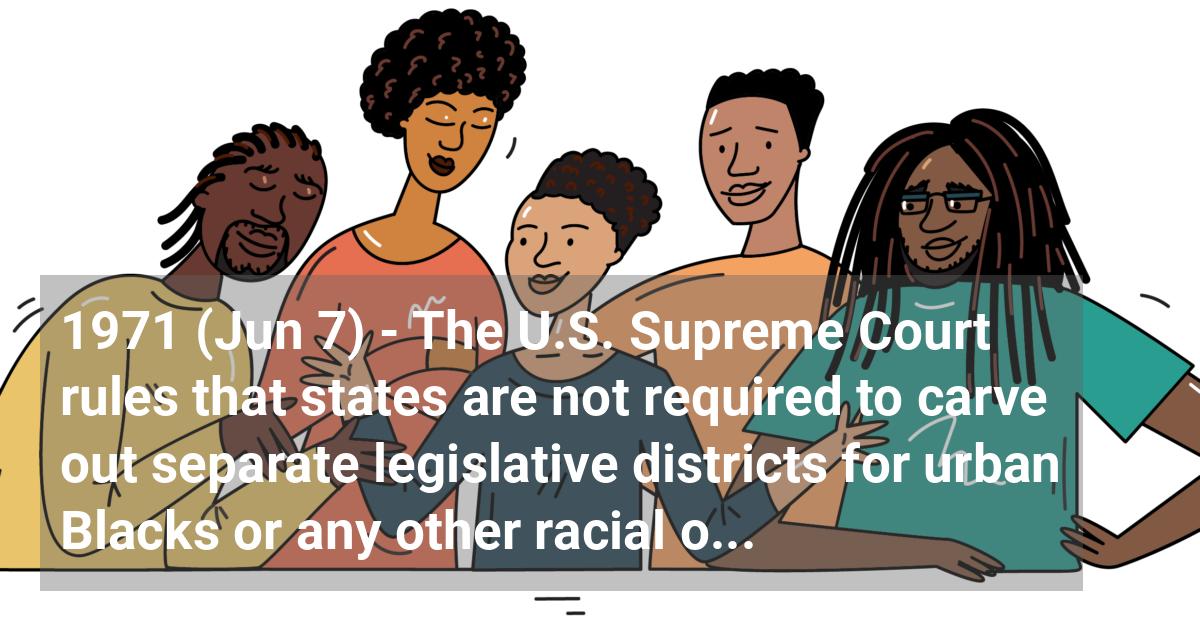Home / Full timeline / The U.S. Supreme Court rules that states are not required to carve out separate legislative districts for urban Blacks or any other racial or ethnic group.
 The U.S. Supreme Court rules that states are not required to carve out separate legislative districts for urban Blacks or any other racial or ethnic group.
The U.S. Supreme Court rules that states are not required to carve out separate legislative districts for urban Blacks or any other racial or ethnic group.
1971 (Jun 7)
The U.S. Supreme Court ruled that states are not required to carve out separate legislative districts for urban Blacks or any other racial or ethnic group. The court held in an apportionment case from Indiana that core-city Blacks may be lumped with more populous suburban white voters into one large district that is represented by a number of legislators elected at large. The 5-3 ruling upset a federal district court's finding that Indianapolis Blacks were the victims of racial gerrymandering and were entitled to their own district with state legislators elected by and responsible to them. The five-man judicial majority, led by Justice Byron R. White, said there was no evidence that Indianapolis Blacks did not have an equal say in choosing legislative candidates or that they were not allowed to register or vote. The majority reasoned that "the mere fact that one interest group or another concerned with the outcome of Marion County elections have found themselves outvoted and without legislative seats of its own provides no basis for invoking constitutional remedies." No explanation was given of the different result that was reached on May 31 when the court ordered Hinds County, Mississippi, which included the capital city of Jackson, to be divided into single-member districts so that Black voters would have a chance to elect their own representatives. Had the Supreme Court established the Jackson principle consistently, Blacks and other inner-city residents would have been assured of larger representation in state legislatures.
References:
- • Hornsby, Alton. Chronology of African-American History: Significant Events and People from 1619 to the Present. Detroit: Gale Research, 1995.
